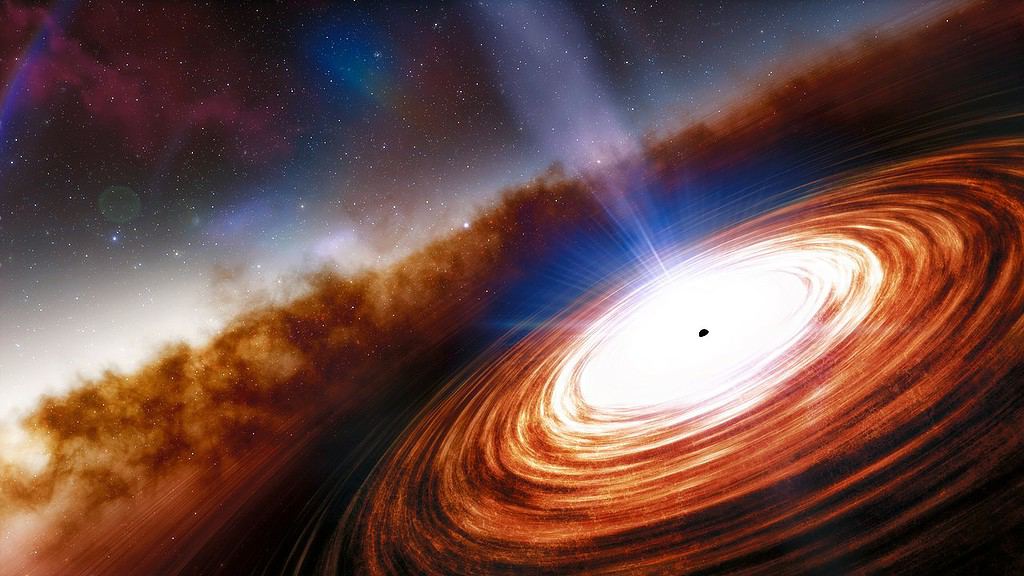
In our day to to day life, time flows independently of any external factors. An hour passes the same for someone in Tokyo as it does for someone in New York, regardless of your subjective perception.
However, with the advent of Einstein‘s theory of relativity, our understanding of time has evolved. According to the theory of relativity, time is not absolute but rather relative and can be influenced by various factors such as gravity and relative motion. This concept is often referred to as “relativistic time.”
The vast expanse of the universe is filled with all sorts of space-time-altering objects and phenomena, from supermassive black holes to dark energy. This much we know, but what about the flow of time at different stages of the universe’s evolution?
In a new study published today in Nature Astronomy, scientists have, for the first time, witnessed the early universe moving at an extraordinarily slow pace. By peering back billions of years into the past thanks to remarkable celestial objects known as quasars, the researchers witnessed time itself slowing down, shedding light on one of the fundamental mysteries of Einstein’s expanding universe.
“Looking back to a time when the universe was just over a billion years old, we see time appearing to flow five times slower,” explains Professor Geraint Lewis, lead author of the study and a scientist from the School of Physics and Sydney Institute for Astronomy at the University of Sydney.
“If you were there, in this infant universe, one second would seem like one second – but from our position, more than 12 billion years into the future, that early time appears to drag.”
Quasars: the cosmic clocks
According to Einstein’s theory of relativity, the distant and hence ancient universe should appear to operate at a significantly slower pace than our current reality. However, investigating this far back in time has proven to be a formidable challenge.
The research team, led by Professor Lewis and collaborator Dr. Brendon Brewer from the University of Auckland, turned to quasars as their cosmic timekeepers. Quasars are hyperactive supermassive black holes located at the centers of early galaxies. By analyzing the data from nearly 200 quasars, they were able to delve into a phenomenon known as time dilation.
Thanks to Einstein’s profound insights, we understand that time and space are intimately interconnected. Ever since the explosive birth of the universe, known as the Big Bang, space has been expanding. This expansion is the key to comprehending the pace of the early universe.
“Our observations of the early universe should appear much slower than the passage of time today,” emphasizes Professor Lewis. “And we have now established this slowdown back to about a billion years after the Big Bang.”
Due to this expansion, we see fluctuations unfolding during the early Universe at a rate that is five times slower than if these phenomena were to occur in near space now. This is simply a consequence of time dilation, due to our particular vantage point in both space and time.

Previously, astronomers relied on supernovae, massive exploding stars, as “standard clocks” to confirm this slow-motion effect in the universe. However, observing supernovae at the immense distances required to view the early universe proved challenging. While supernovae are immensely bright, they are difficult to study in the far reaches of space.
In this study, quasars have propelled our understanding further by pushing back the time horizon to just a tenth of the universe’s age, thus confirming that the universe appears to accelerate as it ages. But that doesn’t mean quasars don’t come with their own challenges.
While supernovae resemble a single flash of light, making them relatively straightforward to study, quasars are more akin to an ongoing fireworks display.
“What we have done is unravel this firework display, showing that quasars, too, can be used as standard markers of time for the early universe,” states Professor Lewis.
To achieve this groundbreaking result, Professor Lewis and Dr. Brewer meticulously examined the behavior of nearly 200 quasars observed over two decades. By combining observations taken at different wavelengths—green light, red light, and infrared—they standardized the ‘ticking’ of each quasar. Employing Bayesian analysis, they successfully superimposed the imprint of the universe’s expansion on the ticking of these cosmic clocks.
Reinforcing Einstein’s Vision
The findings from this study further reinforce Einstein’s depiction of an expanding universe, countering earlier studies that failed to identify the time dilation of distant quasars. “
“These earlier studies led people to question whether quasars are truly cosmological objects or even if the idea of expanding space is correct,” explains Professor Lewis.
“However, with these new data and analysis, we’ve been able to find the elusive tick of the quasars, and they behave just as Einstein’s relativity predicts.”
Through the ingenious use of quasars as cosmic clocks, scientists have revealed that the early universe moved at a glacial pace compared to our present experience. This remarkable study not only deepens our understanding of the universe but also underscores the remarkable accuracy of Einstein’s theories. As we gaze at the stars, we are reminded that time itself is as boundless as the mysteries of the cosmos.






